The higo no kami, colloquially called just a higo or higo knife and usually printed as higonokami, is a venerable and greatly beloved style of pocket knife originating from Japan. Immediately recognizable thanks to its straight and typically distinctive kanji embossed brass scales the markings translating to “Lord of Higo”.
The knife has much in common with the simple folding knives originating from England and the rest of Europe, notably the famous Opinel brand of friction folders.
A classic utility knife in the vein of many working class pocket knives, these blades are suitable for a variety of chores in your day-to-day routine.
This article will explore the fascinating history and ongoing practicality of these knives, and I will make a case for why mine remains one of my very favorite things.
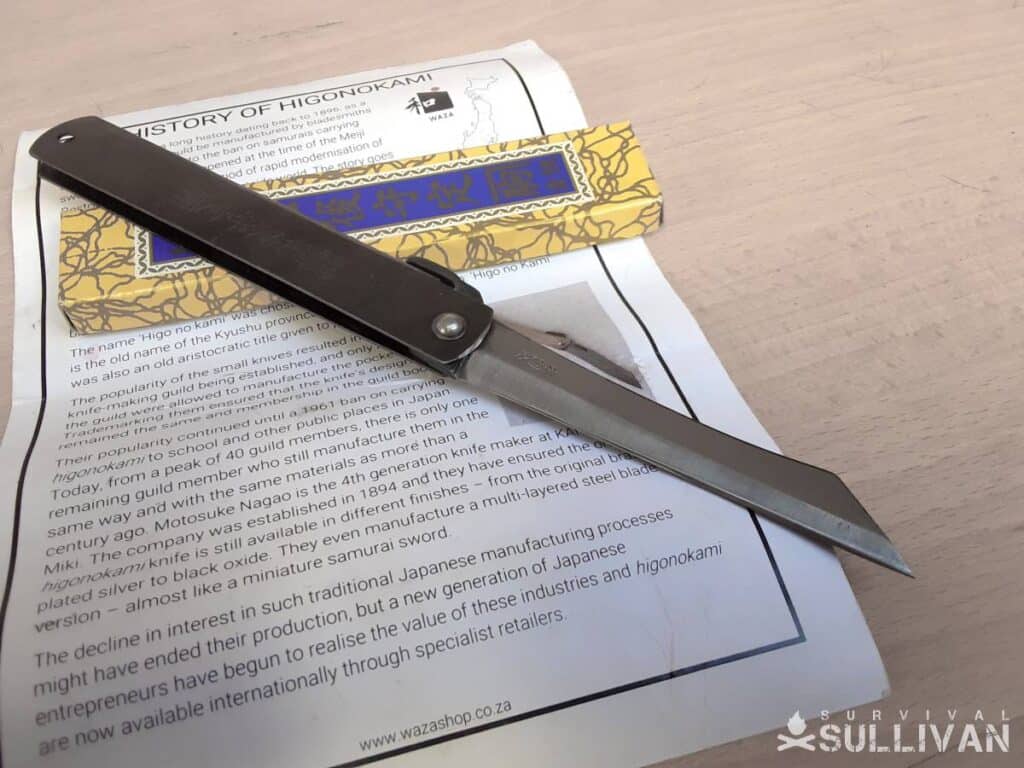
The History of the Higonokami
Each higonokami comes with a piece of paper that gives a brief of its history.
The Higonokami dates to the Meiji Era of Japan. As the Samurai fell out of favor, and the carrying of swords in public was outlawed; demand for swords declined.
Since they weren’t allowed to carry swords, people had to find another way to carry a blade. Blacksmiths turned their skills from large weapons to smaller tools; focusing on the small knives carried by farmers and craftsmen. Enter the Higonokami.
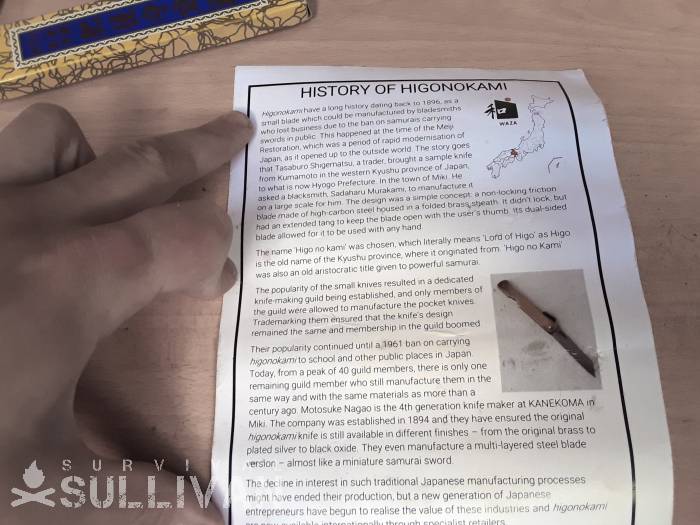
According to the story of the Higonokami, a trader approached a blacksmith named Sadaharu Murakami with a request to mass produce a sample knife. The resulting knives were so popular that they spurred the formation of a specialized guild of knife makers who trademarked the design.
The popularity of the higonokami boomed until a ban was placed on carrying them in public in 1961 following the death of a high-profile politician in Japan. The popularity of these beautiful blades subsequently declined.
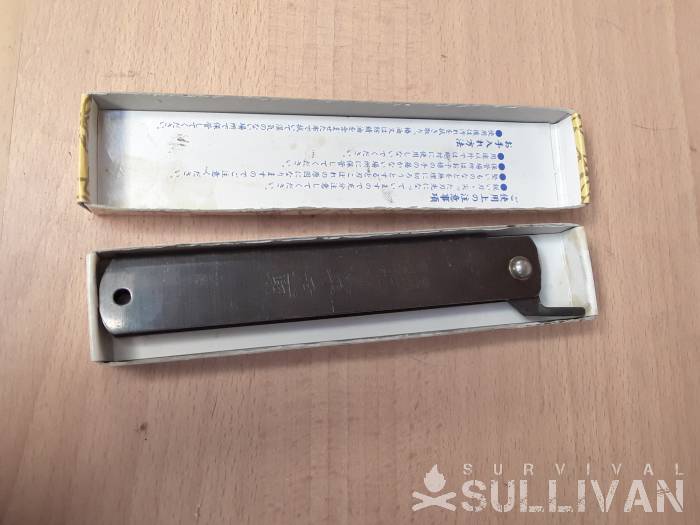
Specs
Now that we’ve got some of the history behind the Higonokami, let’s look at some of the specs.
- Overall Length: 8.2 inches / 21 cm
- Blade Length: 3.5 inches / 9 cm
- Blade Steel: SK-High Carbon
- Blade Style: Reverse Tanto
- Locking Mechanism: none, friction folder
- Weight: 70g
A Good Fidget Knife
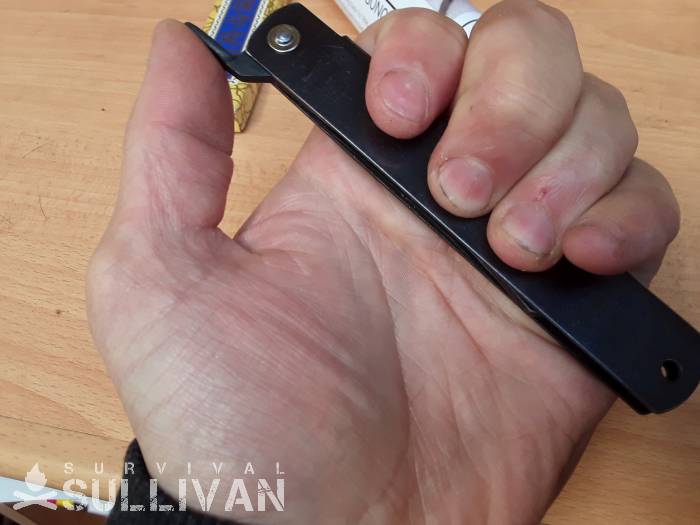
My Higonokami was a Christmas gift from my sister, and I hadn’t really carried it much before doing this review. I don’t abuse my knives, but I can be a little harsh and this was a special piece that I didn’t want to damage – even by accident.
With that in mind, I took it for a spin for a bit to see how it carried and found that it makes a good fidget knife. The extended tang/flipper tab took a bit of practice, but I was able to work with the knife one-handed.
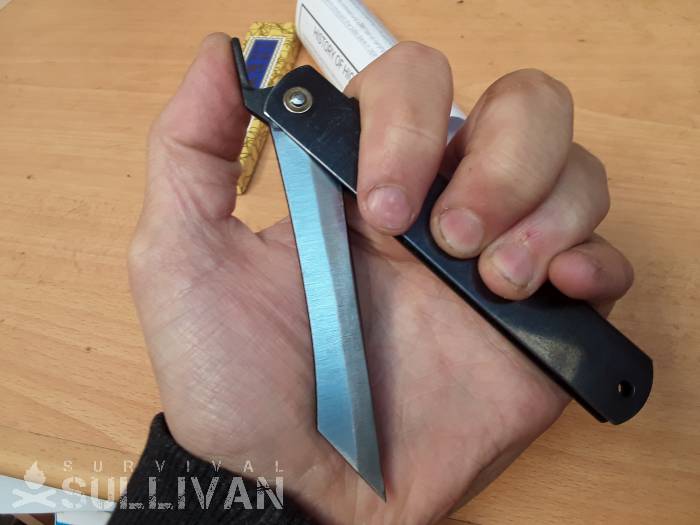
Pros
- ✅ It’s lightweight.
- ✅ Easy one-handed open and close.
- ✅ Easy to sharpen and maintain.
- ✅ Comfortable in-hand.
- ✅ It’s cool to look at.
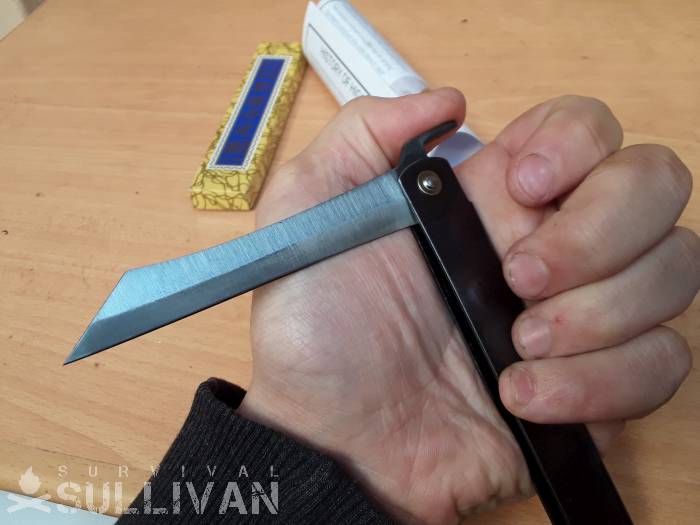
Cons
- ❌ It’s a little awkward to handle, and requires a certain level of dexterity in your fingers – sadly not a good knife to carry in cold temperatures.
- ❌ The blade’s not good for slicing; the thicker bevels tend to make slicing a bit tricky.
- ❌ The blade can rust if not cared for properly.
The only other problem that I have, and it’s more of a nitpick than anything else, is that unless you’ve got a sheath/slip to store it in; it tends to sit at the bottom of your pocket. This isn’t a problem, but it can be a little difficult to get the knife out of your pocket.
Why Should you Carry a Higonokami?
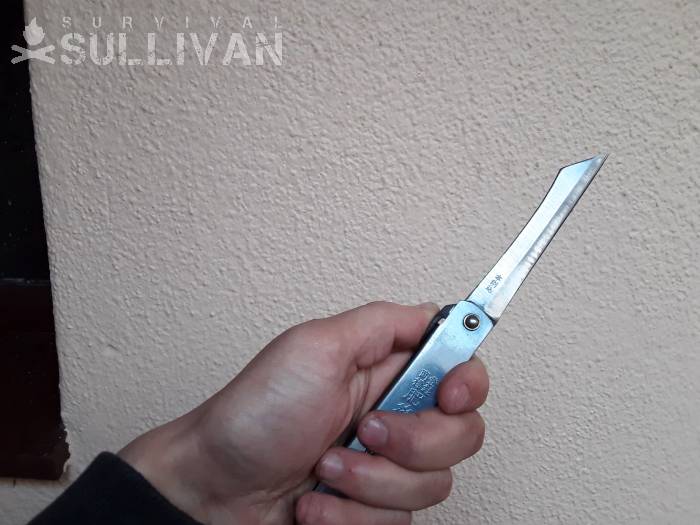
There are a few reasons that I can think of to carry one of these. First off, as a friction folder; the blade doesn’t lock which makes it legal to carry in specific countries (i.e. the UK) – depending on the length of the blade.
It’s also a conversation-starter; an ambassador of sorts that catches the interest of people who may not be too keen on knives.
As mentioned above, these knives began as and remain a genuine utility pocket knife. It is their versatility and simplicity that is their best asset, and depending upon your tastes there is something almost elemental about them compared to other popular pocket knives such as the Swiss Army knife.
The elegant system of opening and keeping the knife open, the handle that is made from a single sheet of folded metal and the rudimentary but effective flat grind of the blade all add up to a knife that is more than the sum of its parts.
Higonokami knives function with no dedicated locking system to hold the blade open, with it instead of relying upon pressure from the wielder’s thumb placed upon the distinctive, tab style lever that lays flat upon the back of the knife when it is open, or else the friction of the swivel itself.
The blades themselves are rarely anything but a traditional flat grind that lacks any secondary bevel.
But, back to practicality, your higonokami knife will be a wonderful companion for all of your travels, and more than capable of opening packages, notching a variety of materials, whittling or just cutting manageable slices out of an apple.
The fine, sharp point also makes it suitable as a carpenter’s tool in conjunction with a square for scribing lines on wood.
The blade is thick enough that it will easily stand up to most light and medium duty tasks, assuming the lack of a proper locking system is not a safety risk.
They are also affordable enough, and typically made to a high enough standard, they are more than suitable as a knife that is kept in a junk drawer, toolbox, tackle box or some other as needed location until they must be called upon.
Additionally, these are relatively non-threatening and so they won’t often scare someone. The high carbon steel blade is harder than some stainless-steel blades. It’s easy to sharpen and holds an edge very well. Edge-retention aside, these are also easy to maintain; just dip the blade into a bit of clean cooking oil.
Each one is handmade so there are slight differences between each one and they are super handy. They don’t open in your pocket – which tends to happen with certain folders – and the blade shape is very utilitarian in nature. You can use it for practically anything and the price isn’t bad; it’s a good, affordable blade to EDC.
In summation, it’s not built for heavy duty cutting tasks but it’s a reliable, and classy knife to add to your EDC.
Closing Thoughts
I don’t normally carry a traditional folding knife but carrying a higonokami was an interesting experience. I enjoyed it, but I think this is one of those special occasion knives that you carry when you want to show off.
If you’re looking for a good fidget knife or even a good first knife, then this is definitely a good one and I highly recommend picking one up for yourself.
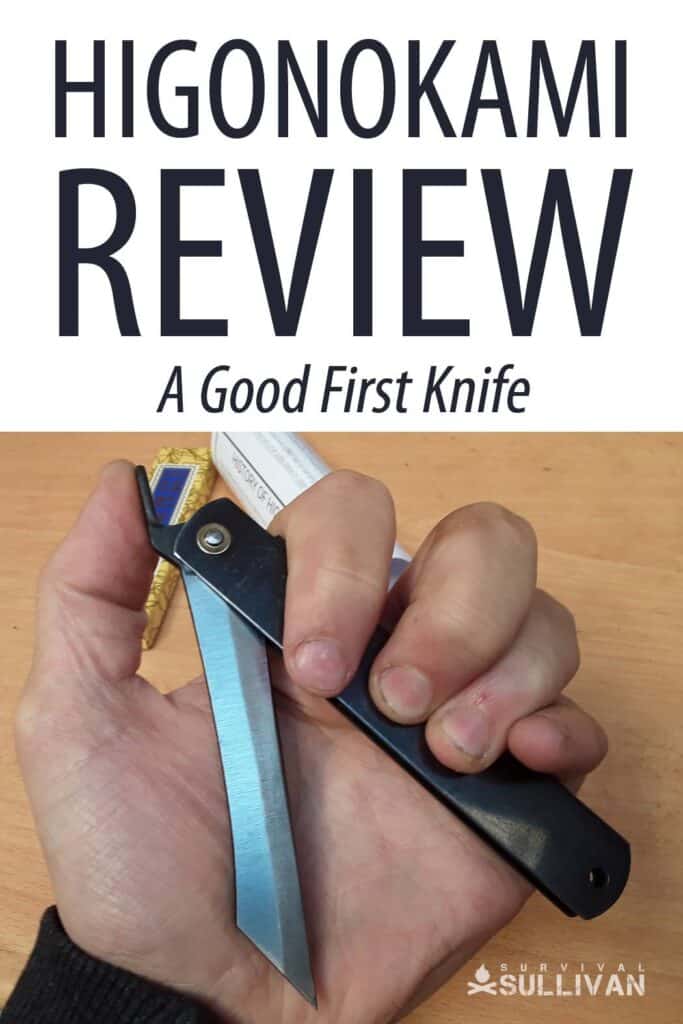

Greg spent much of his younger years camping and hiking. Greg grew up on a small farm with lots of livestock such as cows, horses and chickens. He’s good with a bow and arrow, is a huge knife enthusiast, and has a blackbelt in Taekwondo.

Glad to see a review of these knives. They are a strong contender for one of the best “peasant” knives you can buy for the price point. As far as first knife, I suppose that depends on the age of the user. I would lean more towards an Opinel or a SAK for a first knife for a child as these knives require the operator to focus more on mechanics than the other options out there.